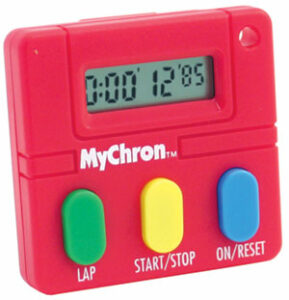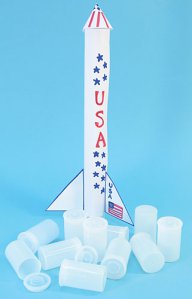 by: Cynthia House
by: Cynthia House
Demonstration Materials:
- 125 ml graduated cylinder or similar item
- ~100 ml of pea gravel or small marbles
- kitchen sponge
- tap water
Experiment Materials:
- preforms and racks (three preforms/student or group)
- fine gravel such as aquarium gravel (~ 30 ml/student or group)
- coarse sand* (~ 30 ml/student or group)
- fine sand* (~ 30 ml/student or group)
- small plastic cups ~ 100 ml capacity
- squares of tulle (“bridal illusion”) and organza, ~ 10 cm x 10 cm
- rubber bands
- electronic balance (capacity at least 100 gm)
- one pound margarine tub or similarly sized plastic cup per balance**
- stopwatch or count-up timer (MyChron Student Timer)
- 125 ml graduated cylinder or similar item
- calculators
- tap water
* Home centers sell sand for sand boxes, landscaping, paving, mortar etc. Beaches are another source, although you may encounter undesirable contamination. Sifting non-homogeneous sand with a fine kitchen strainer may yield two usable grades of sand.
** secondary containment to prevent accidental spillage of water onto the balance
Background Soil Vocabulary:
Porosity is the measure of how much groundwater a soil can hold, permeability is the measure of how quickly water passes through a soil, while retention is the measure of how much water stays behind. Even elementary students can relate these concepts to their everyday lives. They observe that some areas in their yards or school grounds form puddles while others drain quickly after a rainstorm. They may wonder why one neighbor’s garden and yard remains lush and green although a sprinkler is rarely used. Children in communities dependent upon well water can understand the importance of replenishing the water table. In most rural and many suburban areas, homes use septic tanks and drain fields to process household wastewater. The “water cycle” is a topic in elementary science curricula. There are many excellent age-appropriate online sources for information on these topics including the United States Geological Survey (USGS) and the GLOBE program. Read the rest of this entry »




 Posted by Tami O'Connor
Posted by Tami O'Connor  by: Tami O’Connor
by: Tami O’Connor


